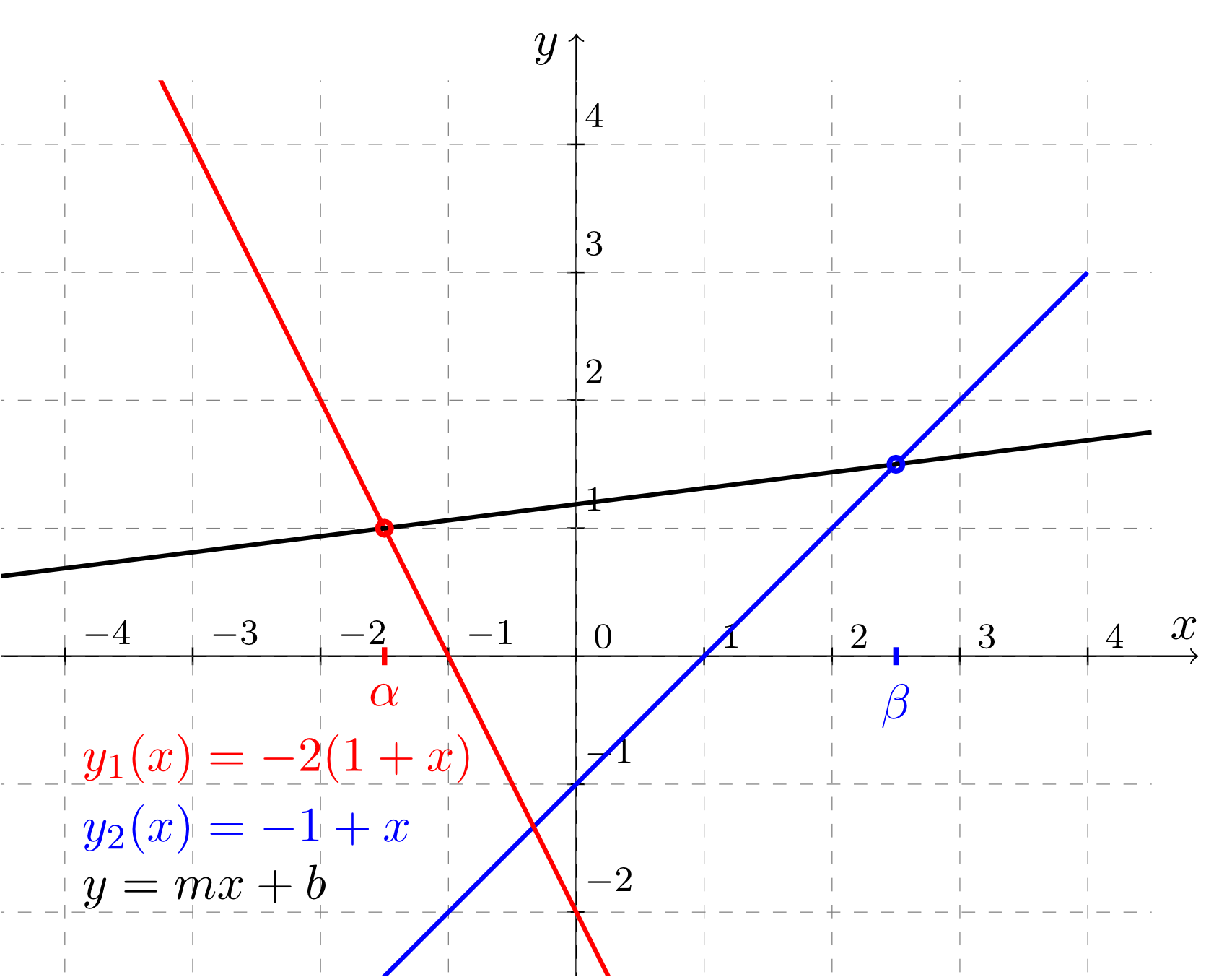Chapter 4 System of Linear Equations
Section 4.4 More general Systems4.4.3 Exercises
Exercise 4.4.3
Find the -intercept and the slope of a line described by the equation which is defined by two points. The first point at lies on the line described by the equation . The second point at lies on the line described by the equation . The following figure illustrates the situation.
- Find the system of equations for the parameters and .
The first equation reads
;
the second equation reads
.
The constants and have to remain in the solution; for these alpha and beta can be entered.
- Solve this system of equations for and . For which values of and does the system have a unique solution, no solution, or an infinite number of solutions?
For and one obtains, for example, the solution
and
, the case and results in the solution
and .
The LS has an infinite number of solutions if
and .
The corresponding solutions can be parameterised by and
, .
- What is the graphical interpretation of the last two cases, i.e. no solution and an infinite number of solutions?
Exercise 4.4.4
Find the solution set of the following LS depending on the parameter .
The LS only has solutions for the following values of the parameter:
.
Set can be entered in the form a;b;c;. The empty set can be entered as .
For the smallest value of the parameter the solution is
,
, , .
For the greatest value of the parameter the solution is
,
, , .
The LS only has solutions for the following values of the parameter:
.
Set can be entered in the form a;b;c;. The empty set can be entered as .
For the smallest value of the parameter the solution is
,
, , .
For the greatest value of the parameter the solution is
,
, , .
 Onlinebrückenkurs Mathematik
Onlinebrückenkurs Mathematik
